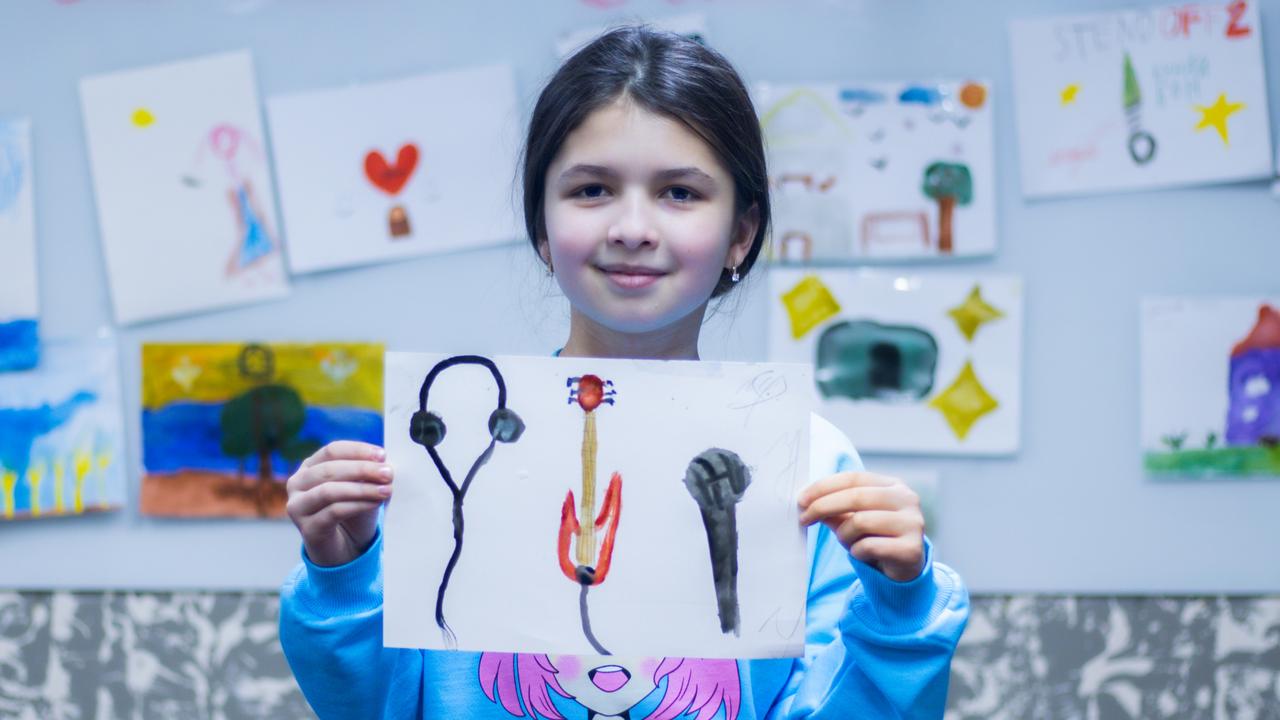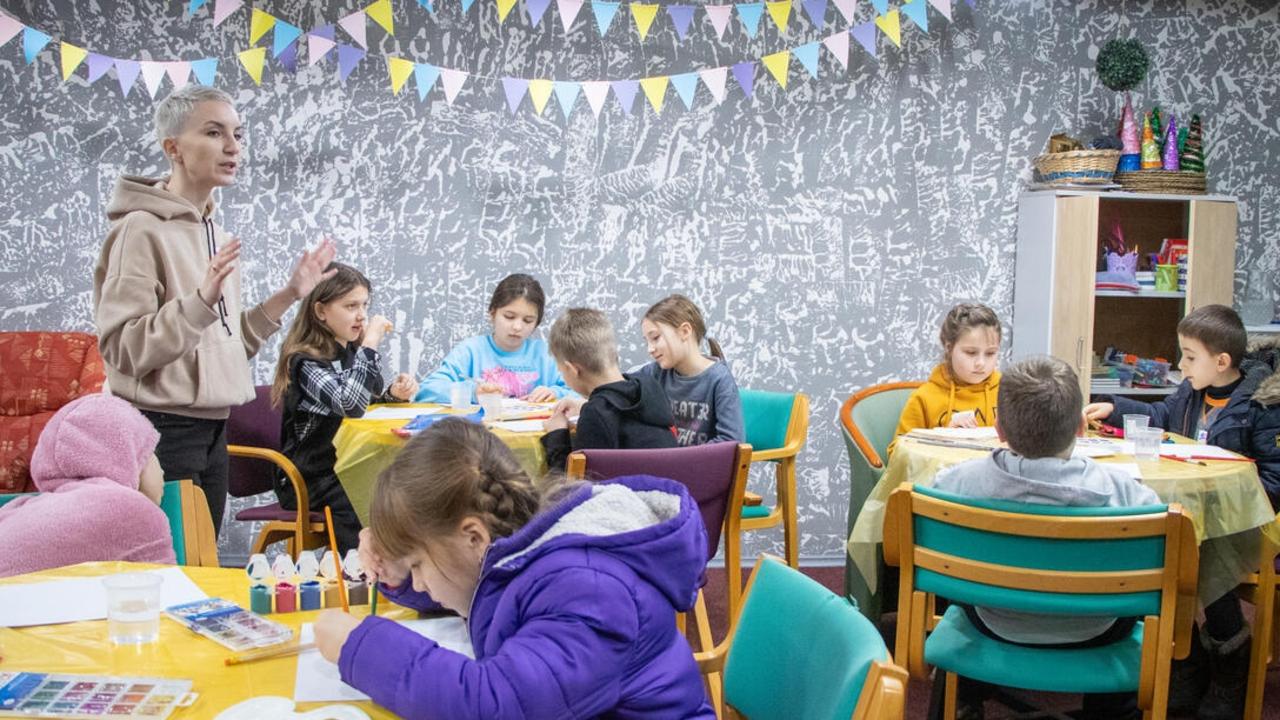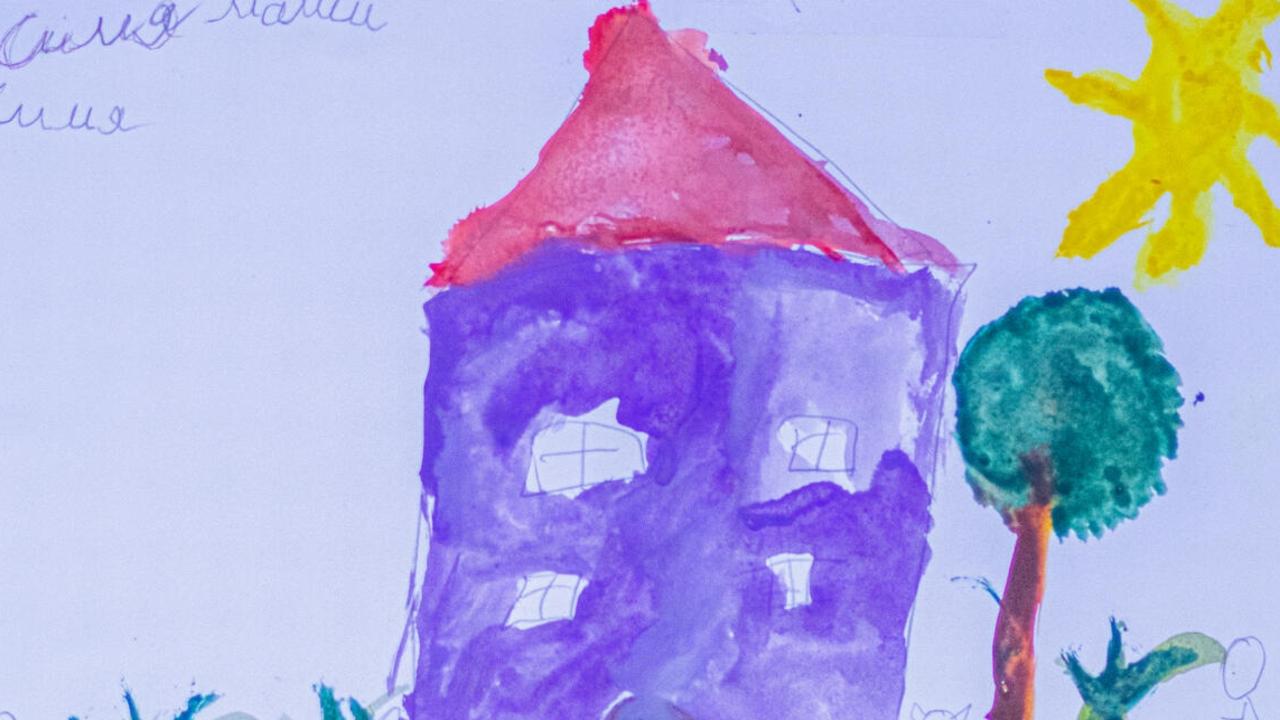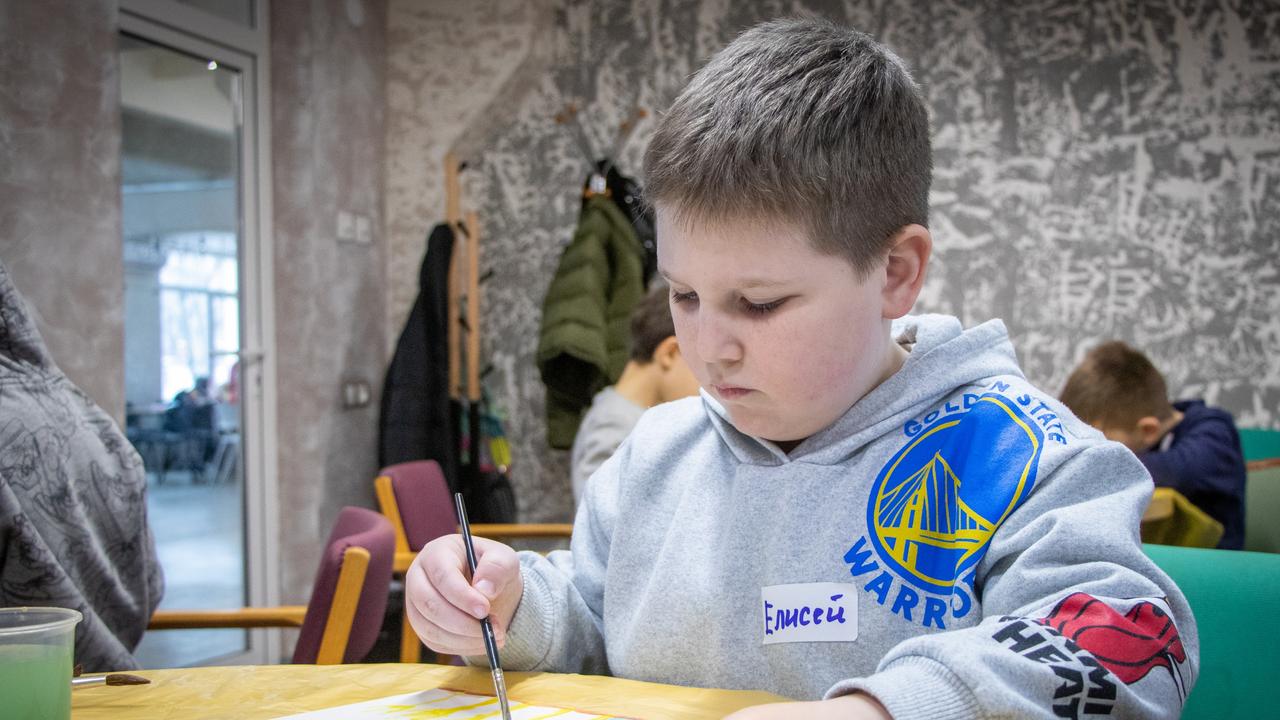Art therapy helps Ukrainian children deal with war trauma
Ukrainian children are creating art to help them deal with the horrors of war in their homeland one year on from the Russian invasion

READING LEVEL: RED
Art is helping Ukrainian children deal with the horrors of war in their homeland*.
The children, who have fled the war-torn* country and drop-in to World Vision support centres in Moldova and Romania, have created a series of artworks – some for their dads, who they haven’t seen for many months, and others of their homes.
A year on from Russia’s invasion of Ukraine, the children are facing a mental health* time bomb* as exposure to shelling*, shooting and loss of family and friends takes a devastating toll, new World Vision research has found.
Since this war broke out, an average of 54 civilians have been killed or injured in Ukraine every day, 2528 schools attacked, and up to five million children forced to flee* for their lives.

World Vision Australia’s country impact manager for Ukraine, Daria Musiienko, said the heartbreaking drawings are a reminder that the true cost of this war are the innocent victims.
“I recently travelled to Romania and Moldova and these children now talk about war like it’s a routine thing. ‘My house was bombed, but I can’t be afraid because I am Ukrainian’. They have almost normalised what was happening to them, but it’s not just the conflict that affects them, it’s also the displacement*. They have all left family behind, like grandparents who were too elderly to travel.”
The drawings help the children express their emotions, said clinical psychologist* Tatiana Orekhov who is a facilitator at a centre in Moldova, supported by World Vision.
“The purpose of what we’re doing here is to create an environment of love and care, a solid feeling of community that they can rely on, preventing* symptoms* of PTSD*. From my field of expertise*, I can confirm it works.”
She added, “When kids come here often and learn how to recognise their feelings, talk, and how to cope with stress, they change their overall mental wellbeing.”

Maria, an eight-year-old from Tarutino in Ukraine painted her house. “Whenever I think of my house, I think of happiness, laughter, and kindness. Since this was my childhood home, I have the most wonderful memories there. I have also painted my family, my family is my happiness.”
Eleven-year-old Arina from Odessa Oblast in Ukraine chose money as her art subject.
“The reason I drew money was that if I had money I could take care of my family, and if my family is taken care of, everything else in my life will be sorted out and I would be happy,” she said. “I hope the war in Ukraine will end soon.”
The children in the international centres attend online classes held from Ukraine, but they are often interrupted by air raids*.

“They just have to wait for the people to come back up from the bunker*. They could enrol in classes in the country they are in, but they’d have to learn a new language, and of course the hope is that they will be able to return to Ukraine soon,” said Ms Musiienko.
“In the World Vision service hubs they can play and draw and just be children, we try and help them recover … well, they will probably never be able to fully recover, but we need to create a safe place for the children until the war is over.”
GLOSSARY
- homeland: one’s native country or region
- World Vision: a child-focused charity organisation
- war-torn: a place devastated by war
- mental health: a person’s psychological and emotional wellbeing
- time bomb: a problem which will eventually become dangerous if not deal with
- shelling: bombing with shells (usually large projectiles)
- flee: run away from a place or situation of danger
- displacement: the departure of people from their homes, usually because of war
- clinical psychologist: an expert in treating mental illness
- preventing: to keep something from happening
- symptoms: a physical or mental feature which is indicates an illness
- PTSD (post-traumatic stress disorder): psychiatric disorder that may occur in people who have experienced a traumatic event
- expertise: expert skill or knowledge in a particular field
- air raids: an attack in which bombs are dropped from aircraft on to a ground target
- bunker: underground shelter, typically for use in wartime
EXTRA READING
Zelensky names Person of the Year 2022
Biden drops in to show support for Ukraine
Ukrainian teens find friends in smiley Sydney
QUICK QUIZ
- Where are the World Vision support centres the Ukrainian children visit?
- What is the purpose of their drawings according to the psychologist?
- What have the children chosen to draw?
- What happens to the children’s online classes if there is an air raid?
- Why don’t the children enrol in a school where they are now?
LISTEN TO THE STORY
CLASSROOM ACTIVITY
1. Showing gratitude
Hearing about the devastation being faced by Ukrainian children can be a reminder to us to show gratitude for many of the things we take for granted. Write a paragraph to explain some of the things that you feel grateful for in your life.
Time: allow 20 minutes to complete this activity
Curriculum Links: English; Personal and Social Capability
2. Extension
Draw or paint a picture of a “safe place” that you would wish for, for a Ukrainian child.
Time: allow 20 minutes to complete this activity
Curriculum Links: English; Personal and Social Capability, Visual Arts
VCOP ACTIVITY
To sum it up
After reading the article, use your comprehension skills to summarise in a maximum of three sentences what the article is about.
Think about:
- What is the main topic or idea?
- What is an important or interesting fact?
- Who was involved (people or places)?
Use your VCOP skills to re-read your summary to make sure it is clear, specific and well punctuated.

